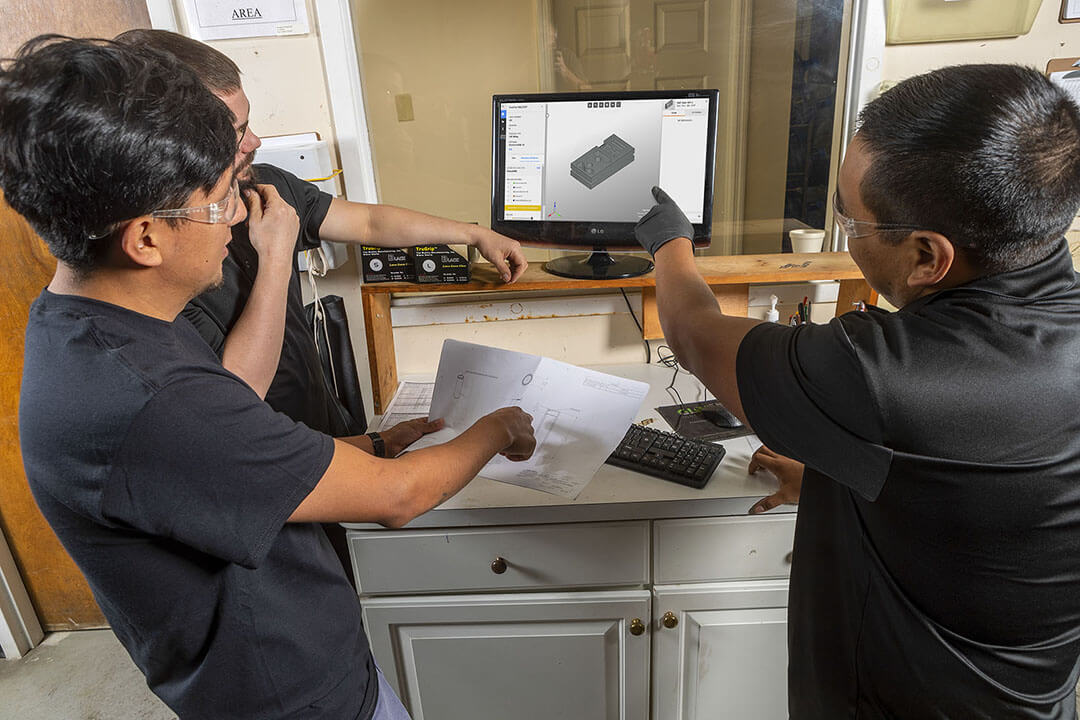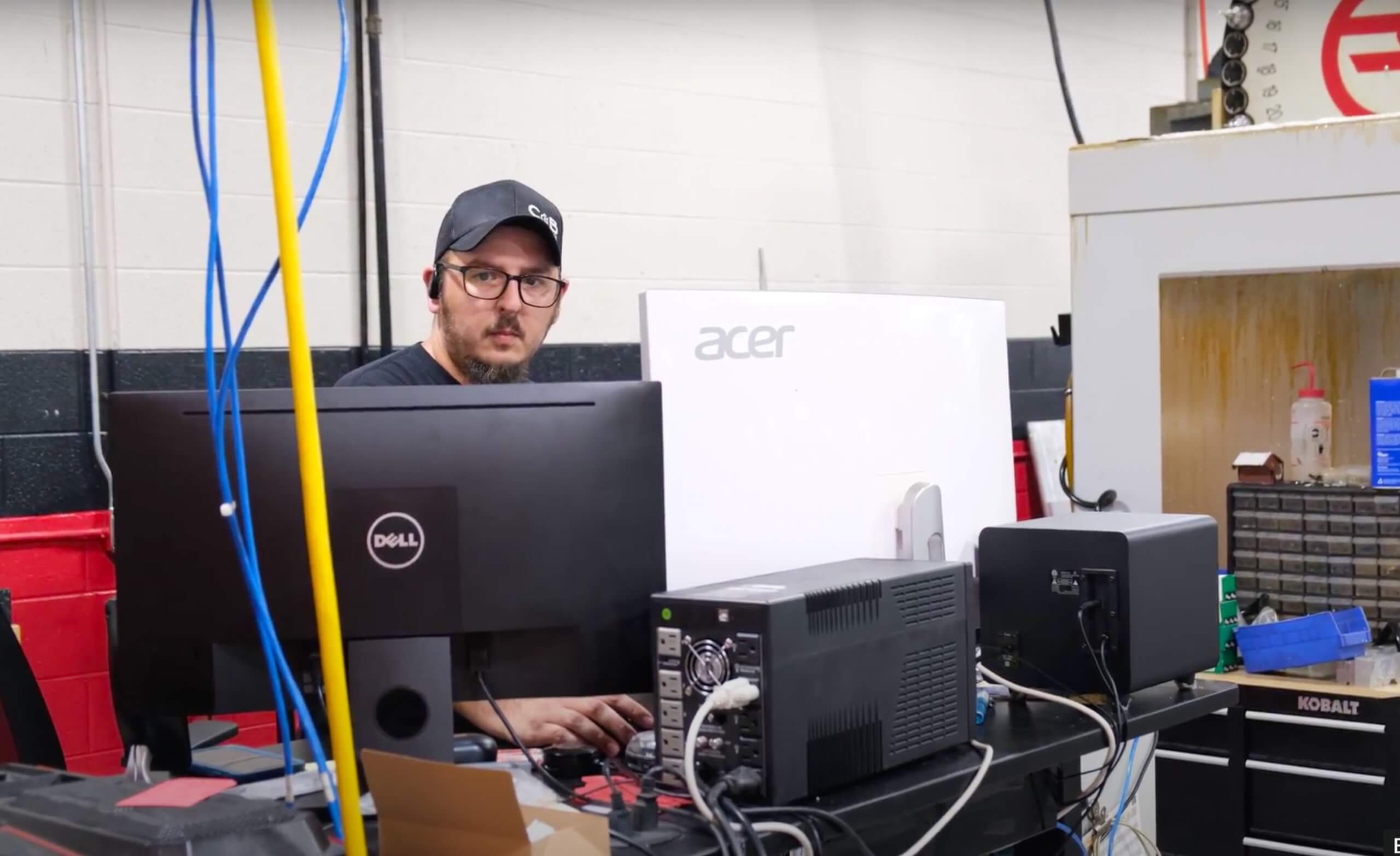
Writing Manufacturing Work Instructions: How to Keep Your Front Office and Shop Floor On The Same Page
In the quoting process, estimators go to painstaking detail to think through the detailed steps it would take to make a part to ensure that winning the job would actually translate into profitable work. Too often however, once a job is won, a programmer has to re-create the detailed manufacturing work instructions, often starting from scratch. The net result: wasted time recreating work that has already been done, or worse, not appreciating how an estimator was thinking about making a part, resulting in a different approach altogether and losing money. What if you could seamlessly pass an estimator’s preliminary work instruction from your front office to your shop floor?
In this blog post, we’ll dive into what manufacturing work instructions are, and why it’s important to communicate them seamlessly across departments and ensure that your entire shop is on the same page. We’ll also explore how software solutions for manufacturers, like Paperless Parts, can be a game changer for your shop.
What Are Manufacturing Work Instructions?
Manufacturing work instructions are detailed documents that guide your shop floor through the process of producing a part. These instructions provide step-by-step guidance on everything from materials and equipment to specific procedures and quality standards. Essentially, they are the roadmap your team follows to turn raw materials into finished products that are ready to ship.
Why Is It Important For Your Shop To Communicate About Manufacturing Work Instructions?
Efficiency and consistency are the backbone of any manufacturing shop. Work instructions ensure that every task is carried out with precision, reducing the risk of errors and rework. If you’re like most shops, estimators are some of your most experienced employees – after all, they’re entrusted with understanding your shop’s capabilities and processes in such detail so that jobs are produced with profitable margins. For many shops, starting with a detailed understanding of how your estimator was thinking about how a part should be made will reduce re-work and help guide junior programmers on the best approach to producing a part. With clear instructions in place, your team can produce high-quality products consistently, boosting customer satisfaction and your shop’s reputation.
How Can You Ensure That Your Entire Shop Is On The Same Page?
To maximize your workflow, you need to create manufacturing work instructions that are not only clear, but are also easy to access. This is where digital solutions like Paperless Parts come in. Throughout the quoting process, estimators leveraging Paperless Parts clearly outline the specific steps they envision are required to make a part, along with estimates for how long that should take. Savvy estimators will not only build out a set of clear operations, they will annotate part models with clear instructions attached to specific features of the part. The clearer the communication, the fewer opportunities there are for misalignment. By maintaining a digital thread, shops can avoid manual, paper-based instructions that can quickly become outdated and get lost on the way to the shop floor.
Best Practices for Writing Clear Work Instructions
Here are just a few best practices and tips for writing good manufacturing work instructions:
- Standardization: One of the fundamental principles of workflow optimization is standardization. Establishing standardized processes for each task, from material handling to quality control, ensures that everyone follows the same best practices. This reduces the chances of errors and makes it easier to train new employees.
- Details and clarity go a long way: Manufacturing work instructions are pivotal in ensuring that tasks are performed consistently and correctly. These instructions should be clear, concise, and easy to understand. Include images, diagrams, and videos where necessary to illustrate critical steps.
- Regularly review and update processes: Workflow optimization is not a one-time effort, but an ongoing process. Regularly review your processes and make necessary adjustments as your shop evolves, new technologies emerge, and customers demand changes.
- Invest in technology: Excel spreadsheets and navigating cluttered shared drives is a recipe for disaster. Utilizing technology solutions that keep all relevant data – files, emails, communications with outside vendors, and internal chats – centralized and searchable can dramatically improve consistency, clarity, and communication.

How Can A Software Solution Help You Write Instructions For Manufacturing Work?
Paperless Parts offers a streamlined approach to creating, managing, and distributing instructions for manufacturing work. Unlike other tools like email or external chat tools like Microsoft Teams, Paperless Parts’ communication platform lets you collaborate internally and externally in the context of a specific part or job. Everyone looking at the part has access to the same information, without having to switch between different multiple software systems.
In the world of manufacturing, every second counts, and the quality of your products can make or break your reputation. Manufacturing work instructions are the guiding light for your shop floor, ensuring that your team produces top-notch products efficiently and consistently. By embracing digital solutions like Paperless Parts, you can streamline your instruction writing process, minimize errors, and maximize your outcomes.
Remember, efficiency is all about working smarter, not harder. And with the right tools at your disposal, your shop can thrive in today’s competitive manufacturing market.
Schedule your free custom demo with Paperless Parts today.


